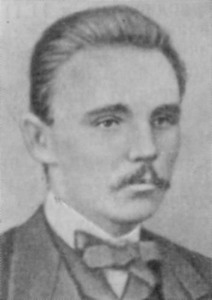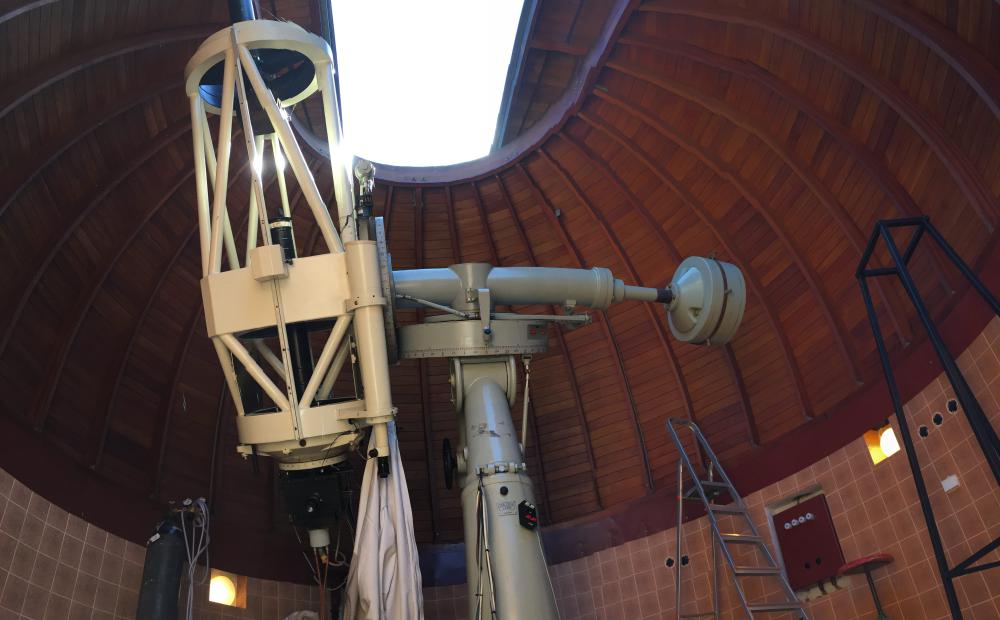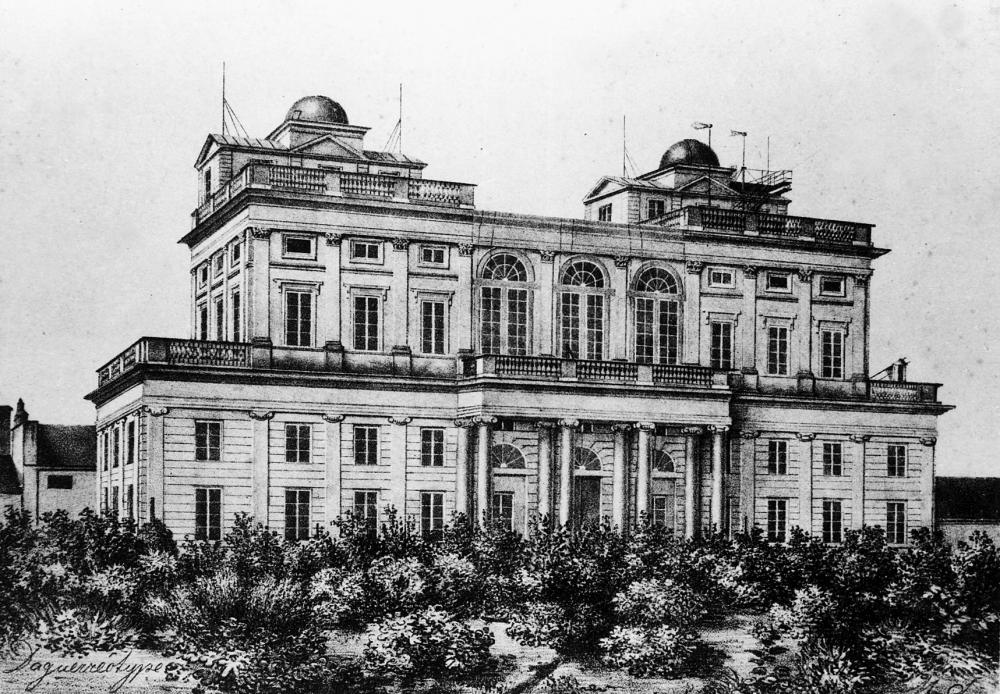
Category of Astronomical Heritage: tangible immovable
Warsaw Observatory, Poland

Description
Geographical position
Aleje Ujazdowskie 4, PL-00-478 Warszawa (Warschau, Warsaw), Poland
Location
Latitude 52.216988 N, Longitude 21.027708 E, Elevation ...m above mean sea level.
IAU observatory code
558
Description of (scientific/cultural/natural) heritage
In the 1700s, the Czartoryski family and Stanisław II Augustus [Poniatowski] (1732--1798), King of Poland and Grand Duke of Lithuania from 1764 to 1795, had private observatories in Warsaw.

Fig. 1. Warsaw (Warschau, Warszawa) University Observatory in classicist style, architects Christian Piotr Aigner, Michal Kado, and Hilary Szpilkowski (1825) (photo Bartosz Bobkowski)
The Warsaw (Warschau, Warszawa) University Observatory is located in between Lazienki Park and the Botanical Gardens, overlooking both. Built in 1820/24 next to a greenhouse for the University of Warsaw (*1816), opened in 1825. Three architects, Christian Piotr Aigner, Michal Kado, and Hilary Szpilkowski, erected the observatory in classicist style, a four story edifice. In the ground floor and the first floor Ionic order columns were used, while the second and the third floor has Corinthian columns. In the center of the facade are three huge arched windows. There are terraces over the columned entrance portico and on the roof, besides two domes and a meridian room.

Fig. 2. Warsaw University Observatory (1825) (Warsawa Observatory)
Scientific Activities
Franciszek Armiński (1789--1848), a student of Jean Baptiste Joseph Delambre (1749--1822) and Dominique François Jean Arago (1786--1853), was the first director of the Astronomy Department. With the funds of Tsar Alexander I (1777--1825), Emperor of Russia from 1801, the first King of Congress Poland from 1815, Armiński got his first instrumentation.
Jan Baranowski (1800--1879), a student of Friedrich Wilhelm Bessel (1784--1846), director in Königsberg [Kaliningrad] since 1848, was interested in comets, observed comet Biela, and determined the orbit. He translated Copernicus, ’De Revolutionibus’, in 1853, into Polish. In 1869, the Russians reorganized the University and only Russians became directors.
Adam Prazmowski (1821--1885), Poland’s first astrophysicist, became famous for the discovery of the polarization of light, emitted by the solar corona. In 1862, he moved to Paris as instrument maker.
Michał Kamieński (1897--1973) organized the construction of an observatory at Pop Iwan (2020m) in the East Carpathian Mountains in 1936; a 33-cm-astrograph (1937) were ordered from Grubb & Parsons for astrophotography.
After WWII an observing station was established in Przegorzaly, near Kraków, in 1947, and in Ostrowik (52°05’23’’ N, 21°25’12’’ E, 200m), 35 km south-east of Warsaw, in 1952, mostly for educational purposes.
The Warsaw Observatory building was reconstructed in 1948/50.
Photoelectric and spectral observations of variable stars and binaries were made. The atmospheres of these stars were studied in theoretical works. Also stellar-statistical and extragalactical studies were undertaken (with photographic plates from abroad or with the Palomar Sky Atlas). In addition, a satellite tracking station was set up.
History

Fig. 3. Ivan Anatol’evich Vostokov (1840--1898) (Wikipedia)
Directors
- Franciszek Armiński (1789--1848), 1816 professor, 1825 to 1848
- Jan Baranowski (1800--1879), 1848 to 1869
- Adam Prazmowski (1821--1885), lecturer at the Observatory until 1862
Russian Astronomers: - Ivan Anatol’evich Vostokov (1840--1898), astronomer at Pulkovo, director 1869 to 1895
- Aleksandr Vasilevich Krasnov (1866--1907), astronomer in Kazan in 1898, director 1899 to 1907
- Jan J. Kowalczyk (1833--1911) and Tadeusz Banachiewicz (1882--1954), assistants of Krasnov
- .... Cerny (....), director 1908 to 1915
WWI to WWII - Jan Krasowski, an astronomer from Lwow, temporarily nominated as director 1915 to 1923
- Michał Kamieński (1897--1973), astronomer in Pulkovo, Vladyvostok and Tokyo, director 1923 to 1944
- Assistants were J. Gadomski, E. Rybka, and L. Orkisz
- Kurt Walter (1905--1992), commissary director of the astronomical observatories
in the General Gouvernement (Warsaw, Cracow, and later Lwow).
- ....
Original Instruments (1826 until 1944)
- 4-inch-Refractor (focal length 6 feet), made by Fraunhofer of Munich
- Equatorial circle (aperture 6 inches, focal length 2.5 feet), made by Reichenbach, Munich
- Transit Instrument (4.5 inches aperture, focal length 6 feet), Reichenbach of Munich
- Meridian Circle (diameter 3 feet, focal length 6 feet), made by Reichenbach of Munich
- Vertical Circle (diameter 3 feet, focal length 4 feet), Reichenbach of Munich
- Heliometer (7.6 cm aperture, possibly 115 cm focal length), Reichenbach of Munich
- Three pendulum clocks made by Gugenmus of Warszawa
- Transit Instrument, Reichenbach & Ertel of Munich
- Meridian Circle (15.5cm aperture, 2.15m focal length), Reichenbach & Ertel of Munich, with a Zeiss impersonal micrometer
- Large Equatorial Refractor
- Heliometer
- Equatorial Comet Finder (1.46m focal length), made by Heyde of Dresden
- 16.2-cm-Equatorial [Parallactic] Refractor (2.65m focal length), Merz of Munich (1859)
- 12-cm-Astrograph (60cm focal length), made by Zeiss of Jena
- Reflecting zenith instrument, made by Wanschaff of Berlin
- Equatorial (13.5cm aperture), made by Thomas Cooke (1807--1868) of York
- Graff photometer
In August 1944 -- total loss of instruments and the library.

Fig. 4a. Ostrowik Observatory (ostrowik.astrouw.edu.pl)

Fig. 4b. 60-cm-Zeiss-Cassegrain Reflector, Ostrowik Observatory (ostrowik.astrouw.edu.pl)
Instruments after WWII in Warsaw and Ostrowik
- 25-cm-Refractor (1947)
- Astrograph with a 14-cm-camera and a 6-cm-camera (1947)
- 33-cm-Astrograph (Triplet) combined with the 25-cm-visual Refractor,
Grubb & Parsons of Newcastle upon Tyne (1937) -- observatory at Pop Iwan - 35-cm-Reflector
- 60-cm-Cassegrain Reflecting Telescope (effective focal length of 7.5m), Carl Zeiss of Jena (1973)
with Tektronix CCD camera, up to 19 magnitude
State of preservation
The building, including the furniture, astronomical museum collections, as well as the library with unique 15th and 16th century manuscripts, burned down during the Warsaw Uprising in August 1944.
The observatory was carefully reconstructed in 1947 based on the design of Jan Dąbrowski and was restored in its 1824 shape. But inside walls and staircases were demolished, and the whole building was prepared to serve as an educational facility in astronomy.
Comparison with related/similar sites

Fig. 5. Warsaw University Observatory (1825) (Warsawa University, uw200.uw.edu.pl)
There exist some observatories with two domes like Warschau/Warsaw Observatory, Poland (1820/24) in the beginning of the 19th century, in the 1820s, e.g.
- Munich-Bogenhausen Observatory, Germany (1817)
- Royal Observatory, Cape of the Good Hope, Cape Town, South Africa (1820); this has a more complicated footprint - like an H - with a dome on each side.
- Hamburg-Millerntor Observatory, Germany (1825)
- Old Brussels Observatory in Sint-Joost-ten-Node (1828--1891)
- Geneva Observatory (1830).
But this Warsaw Observatory (1825) with four floors is larger -- compared to the other observatories.
Threats or potential threats
The building is well restored after the destruction in WWII - no threats.
Present use

Fig. 6. Reflecting Telescope (Warsawa University, astrouw.edu.pl)
The observatory is acticely used for astrophysical research in the following areas: extragalactic astronomy, theory of relativity and cosmology, the theory of stellar atmospheres, the theory of hydrodynamic flows in binary systems and interstellar matter, observations of variable stars (binaries, pulsars, chromospherically active), the photometry of stellar clusters, the spectroscopy of variable and chemically singular stars.
Nowadays the observatory serves also for educational purposes and for teaching students.
Astronomical relevance today

Fig. 7a. Polish 1.3-m-telescope in Las Campanas Observatory in Chile (Wikipedia CC 2.5, Krzysztof Ulaczyk)

Fig. 7b. OGLE-IV Galactic Bulge fields with cadence, from OGLE-IV sky coverage (Wikipedia CC 3, Vulpecula)

Fig. 7c. Artist’s impression of the planet OGLE-2005-BLG-390Lb discovered by the OGLE Team (NASA)
The observatory is a headquarter of two widely recognized worldwide large scale long-term surveys: OGLE (Optical Gravitational Lensing Experiment, 1992) and ASAS (All Sky Automated Survey) -- leaders of this new field of modern astrophysics.
Warsaw astronomers are also actively involved in many well known astrophysical collaborations like H.E.S.S., CTA, LIGO/VIRGO, ARAUKARIA, and satellite missions like PLANCK and GAIA. Observatory operates two observing stations: the northern station is located in Ostrowik near Warsaw and it is used mainly for educational and student training purposes. The southern station with a 1.3-m-Reflector (for massive stellar photometry) is located at the Las Campanas Observatory, Chile (LCO), Carnegie Institution of Washington -- one of the best astronomical sites in the world.
References
Bibliography (books and published articles)
- Duerbeck, Hilmar W.: German Astronomy in the Third Reich. In: Heck, André (ed.): Organizations and Strategies in Astronomy, Vol. 7. Dordrecht, The Netherlands: Springer (Astrophysics and Space Science Library) 2006, p. 383-413.
- Kubiak, Marcin & Iwona Korzeniewska: Astronomical observatories in Poland. In: Astronomical observatories in Poland. Edited by the Local Organizing Committee for the Extraordinary General Assembly of the IAU in Poland. Warszawa (Poland): Polish Astronomical Society. PWN - Polish Scientific Publishers 1973 (62 p.), (1973aop..book.....K).
- Witkowski, J.M.: Michał Kamieński (1897--1973). In: QJRAS 15 (1974), 50-52 (1974QJRAS__15___48W).
Links to external sites
- Astronomical Observatory, Faculty of Physics, University in Warsaw
- Astronomical Observatory of the University of Warsaw, founded in 1825
- Peter Abrahams: Historic telescopes of Poland
- OGLE - Optical Gravitational Lensing Experiment
- Optical Gravitational Lensing Experiment - University of Warsaw and OGLE telescope at the Las Campanas Observatory, since 1992
No multimedia content published
Currently there is no multimedia content published for this case study























